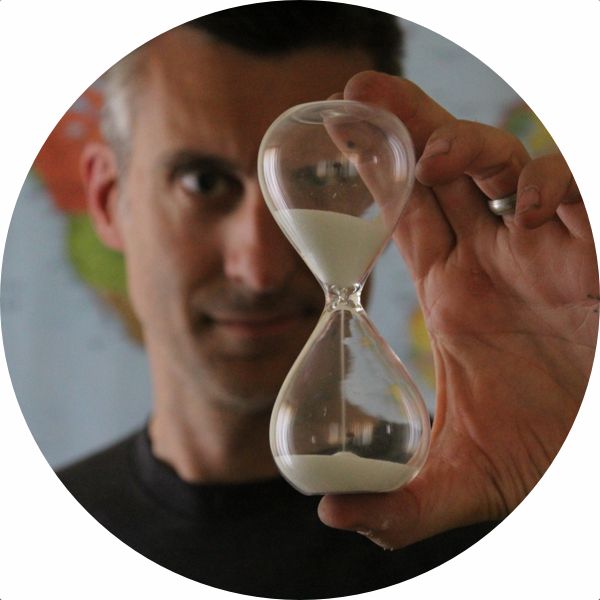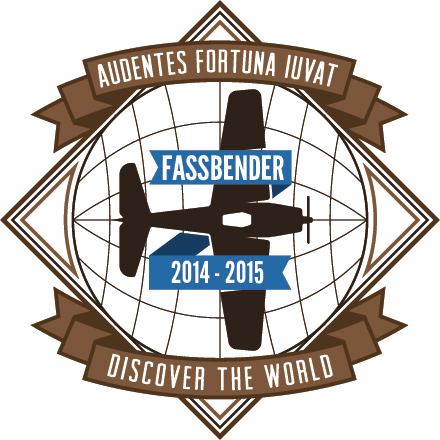The Prototype German Work Camp.
As we make our way through Europe, we’re learning a lot about history from a European perspective, especially World War I, the interwar period, and the events that led up to World War II. So one of the things on our list was visiting one of the concentration camp memorials.
We were thinking about going to Auschwitz, but it’s in what is now Poland and well off the route we had planned. So after looking at our itinerary, we saw that the Dachau Concentration Camp Memorial, which is very close to Freising, made the most sense for our schedule. So the morning after we arrived in Freising, we got back into the car and made the 40-minute drive to Dachau.
“In the Machine” memorial sculpture at Dachau.
The drive took us through some really beautiful German countryside. I’m not sure what I expected exactly, but I didn’t think Germany was going to be so picturesque. But even as we enjoyed the beauty, as we drove through the city of Dachau we couldn’t help but wonder what it’s like living in the shadow of a former concentration camp.
Inside Dachau
We arrived at the memorial in time to sign up for the guided tour, which was a good value at €3 each (I think the kids were less, but I can’t recall exactly). You certainly don’t need to do the guided tour — entry to the memorial is free — but the site is so big and there are so many different aspects, a guide really helps tell the story of this place.
Right away, the tour pulled no punches. Our guide Keith took us over to a spot near where the allies first arrived into Dachau. He told us that when the U.S. troops arrived on April 29, 1945, they found train cars full of emaciated bodies, mostly dead but a few still alive. And that was only a small preview of the horrors they would see when they got inside the gates.
The notorious gate into Dachau (a replica). Translated, it says “Work sets you free.”
From there, Keith took us back to some of the early history of Dachau and how it got started. It began in 1933, almost immediately after Hitler was appointed Chancellor of Germany. At first it was a place to keep political prisoners, but that soon expanded to include Jews, homosexuals, gypsies, and pretty much anyone the Nazi party deemed a political or social threat.
And almost right away, Keith addressed the question we’d asked among ourselves as we drove in — why anyone would live near Dachau? As it turns out, that’s a common question — and it has a very simple, if stunning, answer.
Work camp location map.
There were so many different Nazi work camps all over Germany, that you can’t not live by where one had been in operation. The image above shows a small section of Germany from a large map that Keith showed us. The full map was huge and showed the locations of all the work camps in German-occupied territory as of 1945. There were more than 10,000 sub-camps (each attached to one of the main concentration camps), so there was a camp pretty much anywhere there was even a minor town. It was a chilling realization.
Prototype Work Camp
Dachau wasn’t the biggest or the deadliest of the Nazi concentration camps, but it was the first and acted as a model for all the others. It was also a training ground and school for the SS and other soldiers, who were incentivized to commit acts of violence.
Many of the war’s most notorious Nazi villains, spent at least a little time here, inuring themselves to human suffering and learning about cruelty, torture, and murder. 206,000 prisoners passed through the gates of Dachau in its 12 years of operation, and 41,500 of those were killed.
A wall for executions.
At its height, Dachau had 34 barracks to hold its prisoners. There are only two (reconstructed) today, but the foundation of each former barracks is still on site. When you stand there and see how vast the site is, and then think about how many such camps were located all over Nazi-occupied Europe, it’s mind boggling.
Roll call area with reconstructed barracks.
The buildings themselves were long and narrow structures where the prisoners slept. They showed pictures of the abysmal sleeping conditions the prisoners endured. There were so many people jammed onto what looked like bookshelves they had to lie on their sides, three or four people deep.
Map and location of barracks.
Behind the barracks there are a number of different memorials, one for Catholics, one for Protestants, and one for Jews. The Catholic one has a bell out front that rings every day at five minutes to 3:00 p.m. — the time that Jesus Christ was said to have died on the cross. As it so happened, that’s about when we were there — and Keith was able to get us a good distance away before the bell sounded, which was a good thing. It was really loud.
The Catholic memorial at Dachau. Note the bell on the left.
After we were done touring the main part of the camp, Keith took us to a secluded section of the camp we were shown the crematorium and a brick building where prisoners were killed with Zyklon B gas. The method for this was downright evil. The prisoners were led through a door labeled brausebad (shower or bath).
Door to the gas chamber at Dachau.
Once they were inside, the door was locked, then Nazi soldier would drop Zyklon B pellets though twin slots from the outside of the building. The pellets would dissolve when they contacted the air and the prisoners would breathe in the poison gas and die, usually in less than two minutes.
Zyklon B delivery chutes.
After the prisoners were dead and the gas was vented out of the chamber, the bodies were collected and then moved into the crematorium where they were burned.
Cremation chambers.
Behind the gas building there’s a forested section of the camp that contains memorials to “thousands of unknown dead” and other somewhat secluded spots that are marked with a stone slab inscribed with “place of execution.”
The inscription here reads: “Grave of Thousands Unknown.”
All things considered, it was a tough tour and we all came away from it feeling emotionally drained. We drove back to Freising and went right to Weihenstephan Brewery. We needed a little relief after what we’d seen and learned about.

Tom Fassbender is a writer of things with a strong adventurous streak. He also drinks coffee.




















